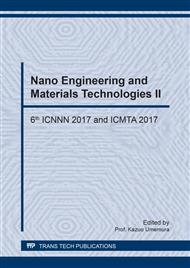p.195
p.200
p.207
p.212
p.217
p.221
p.226
p.232
p.239
Characterization of Non-Metallic Inclusions in API Steel Grades Using Automated Energy Dispersive X-Ray
Abstract:
Non-metallic inclusions in API steel grades deteriorate steels’ mechanical properties and their resistance to hydrogen induced cracking. The formation and evolution of inclusion during liquid steel processing was investigated by analyzing samples taken from different stages of the steel making process in API X52 and X60 steel grades. Scanning electron microscope (SEM) with automated feature EDX analyzer (INCAF 250) was used to identify each inclusion in terms of its size, area and composition. It was found that non-metallic inclusions in API X52 and X60 grades from steelmaking and casting samples were mainly Al2O3, Ca–Al and Ca-Mg-Al. In this work changes in inclusion composition, size and area fraction from ladle processing to casting were mapped and this information was used to improve steel cleanness and product quality.
Info:
Periodical:
Pages:
217-220
Citation:
Online since:
March 2018
Authors:
Price:
Сopyright:
© 2018 Trans Tech Publications Ltd. All Rights Reserved
Share:
Citation:


